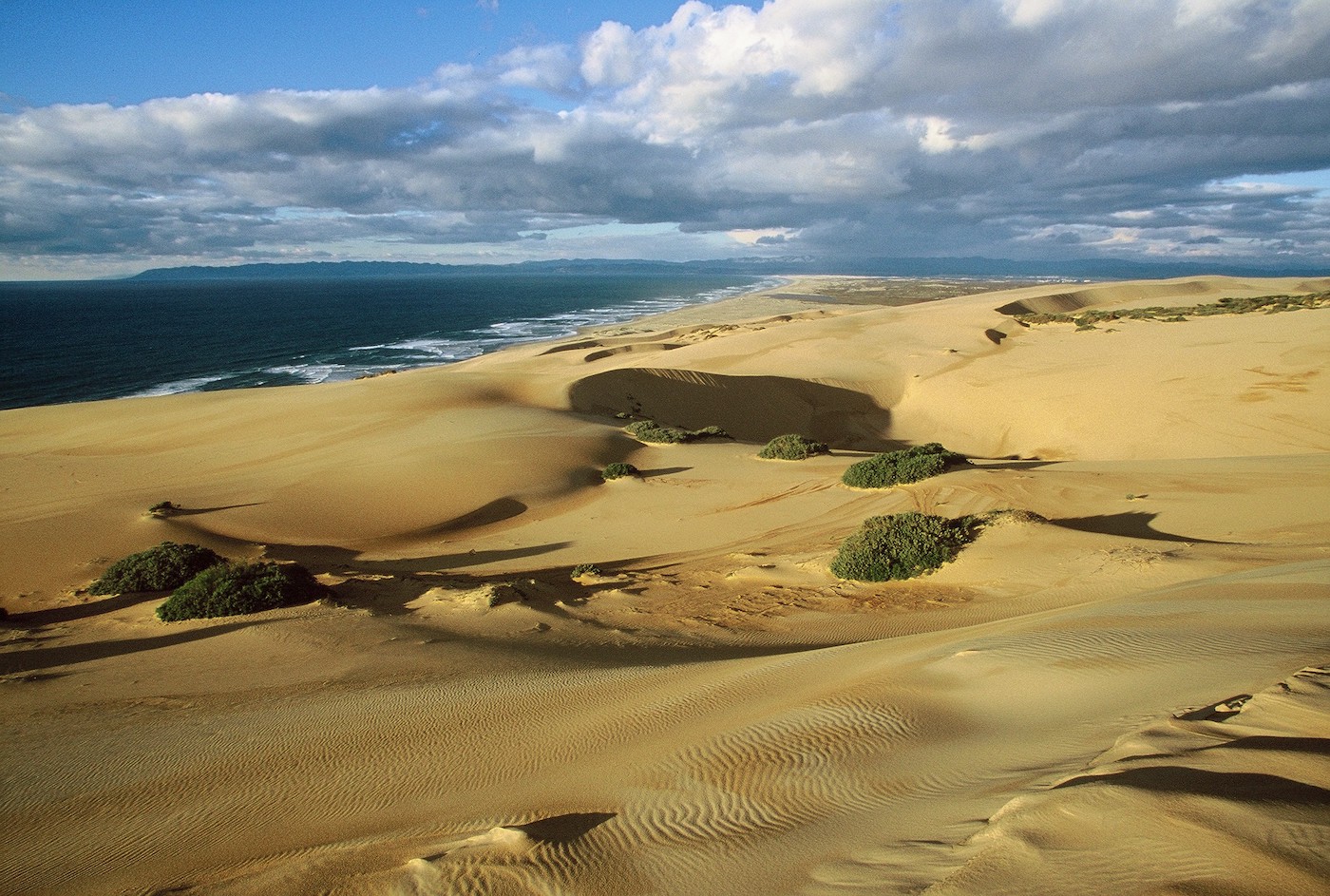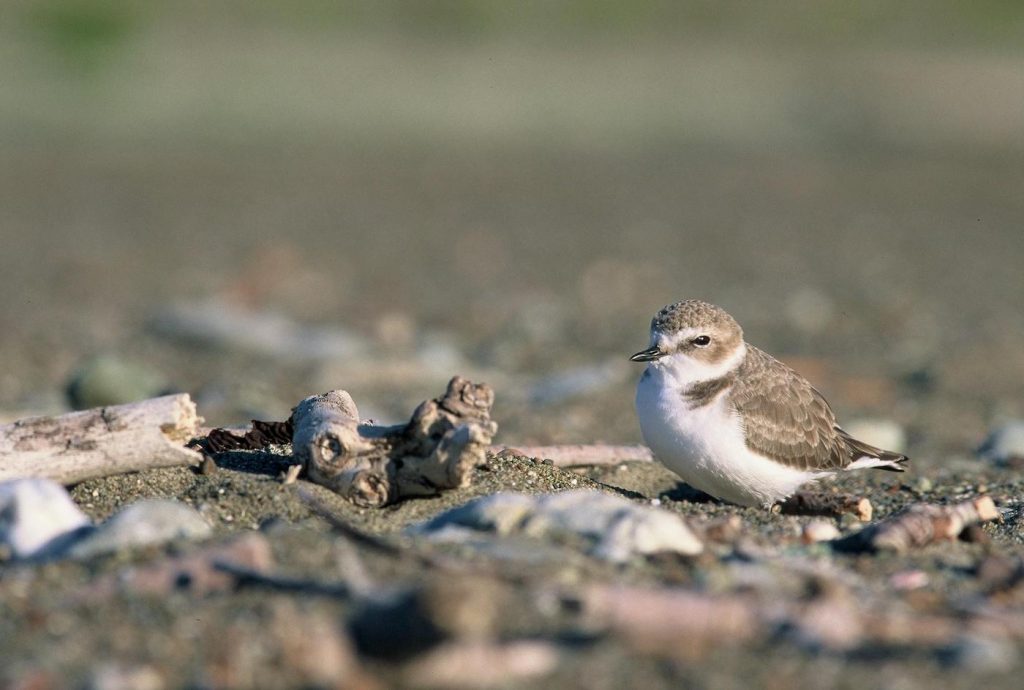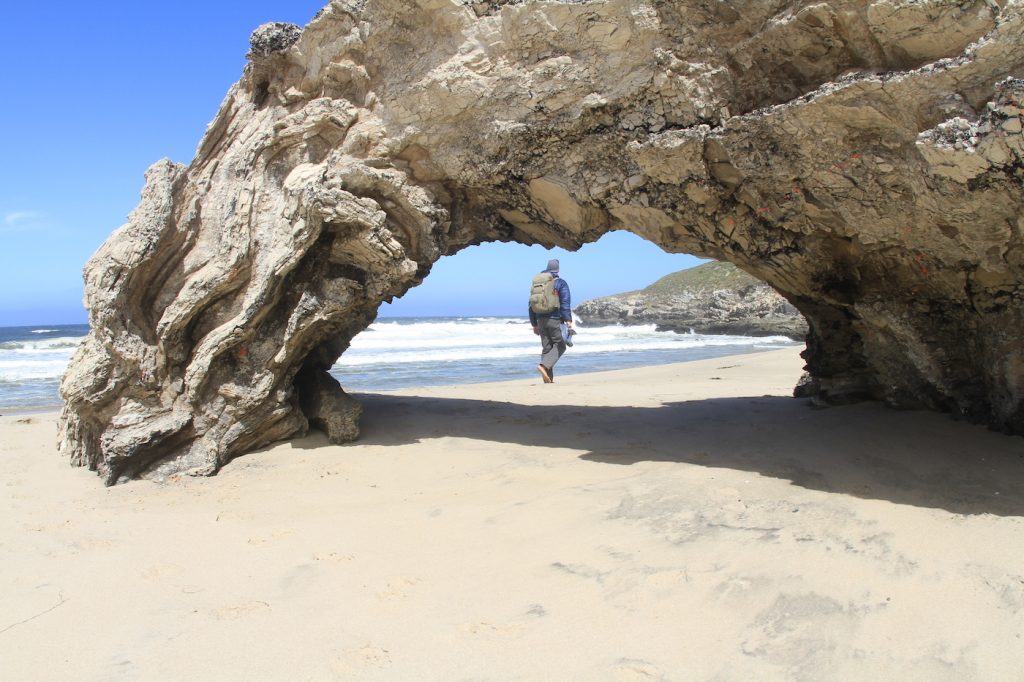Wind-driven

All it took was a western snowy plover to get my mind right for a hike in the Guadalupe – Nipomo Sand Dunes National Wildlife Refuge, located in Santa Barbara’s North County.
The tiny shorebirds don’t migrate, so these hardy little plovers endure a lot of northwest winds throughout the year, especially in the spring when the dunes are at their sandblasting best. But that’s what makes the dunes such works of art and keeps them ever-changing in the harsh conditions.
The refuge is one of the last bastions on the entire West Coast of the U.S. for western snowy plovers. Huge, broad beaches with an endless flotsam of dead and drying kelp and splintered driftwood, which characterizes this rugged shoreline. Their nests are concealed well above the wrack line left by the most recent high tides, giving the western snowy plovers all they need to survive as they chase beach hoppers (their preferred food) and rear their tiny chicks.
So, when I was eating sand in 25 mph northwesterly winds in steep, 500-foot-tall waves of sand and looked over my shoulder and saw a western snowy plover hunkering down behind a gnarled ball of giant bladder kelp strewn across the windswept beach, I reminded myself, “if that little shorebird can do it, I better be able to too.”

Spring time is a dual-edged sword on the dunes. Despite just a small amount of rain this past winter, the wildflowers were quite good in the upper reaches of the refuge, out toward Paradise Beach and beyond to Point Sal. So, I shed my trail shoes, dealt with sand in every crevice, and enjoyed the color on the largest coastal dune complex on the entire West Coast.
Seeing coreopsis blooming this late in the spring was unusual. They normally bloom in early spring – say, late February into March – but there could be blooms extending into June from the looks of things this year. I also found Indian paintbrush, purple sand verbena, morning glory (the first wildflower to colonize the dunes), and bushels of silver lupine, wildflowers that can all withstand the relentless northwest winds funneling down the Central California Coast.
Beyond the dunes, I descended the last steep dune north of Paradise Beach. A rope was tied off for those who need a hand on the return hike. It’s definitely steep, a good little leg-burning workout with a 30-pound camera pack on my back.
A year-round spring divides the dunes and Paradise Beach. I crossed it and followed the trail down to the beach. Fortunately, I had trousers on, so while setting up my tripod I began to pick and count the ticks on the lower half of my body. Good thing I wore those pants. I stopped counting after 19 ticks; even so, I was still finding them on me by the end of the day. They were thriving in the spring, in the reeds that reached no taller than my knees, but some were on my upper torso.

After firing off a few frames, I made my way back, the northwest winds reaching gale-force conditions as they commonly do on this stretch of coast. There were more ticks to pick off and knee-deep sand for 500-feet of vertical to contend with before cresting the tallest dunes. It’s one of the best coastal scenes on the West Coast, so it’s way worth dealing with all the sand. Like I said earlier, “if the western snowy plover can do it, so can I.”
I was the only one on the beach, still a couple miles away from my truck. Along the slog I was blown away by the amount of shorebirds hiding behind anything working like a windbreak. Western snowy plovers are more solitary than other shorebirds, so it was western sandpipers and sanderlings that were congregating and huddling behind balled up kelp and semi-buried driftwood.
By the time I reached my truck, there were two maintenance workers from California State Parks. Their job was to keep the parking lot free of sand. One was in a little miniature bulldozer, the other poor sap was using a wheel barrel, push broom, and shovel. It seemed futile until I almost didn’t make it past the crossing sign for western snowy plovers.





